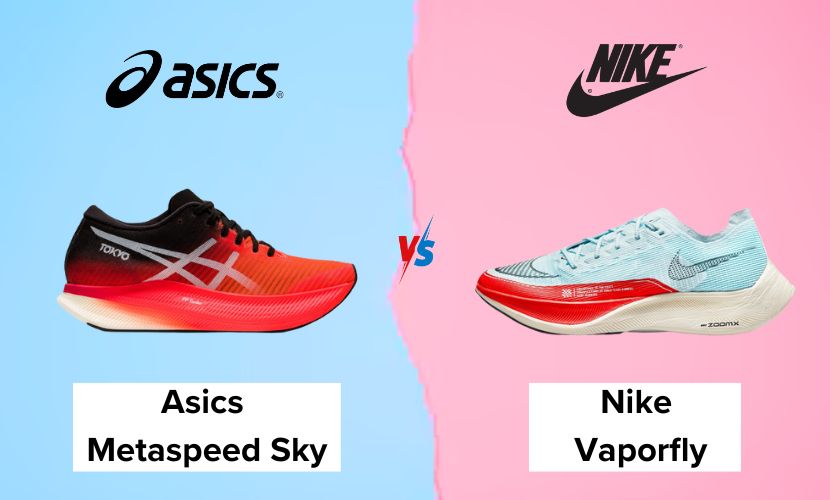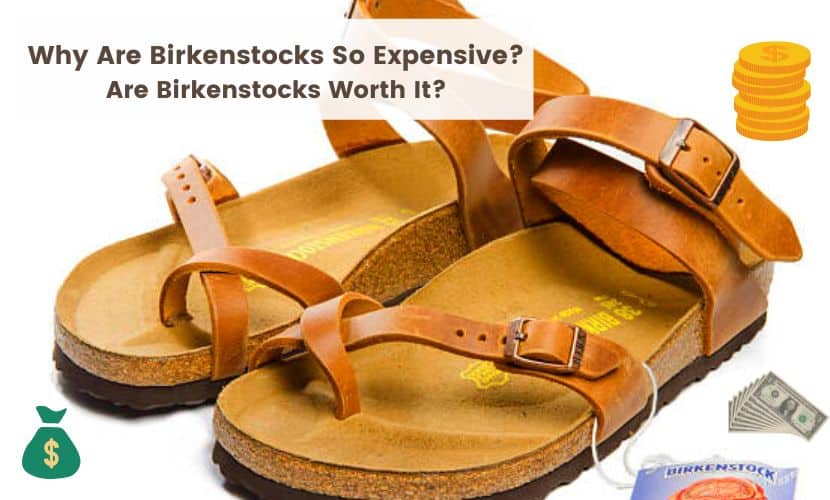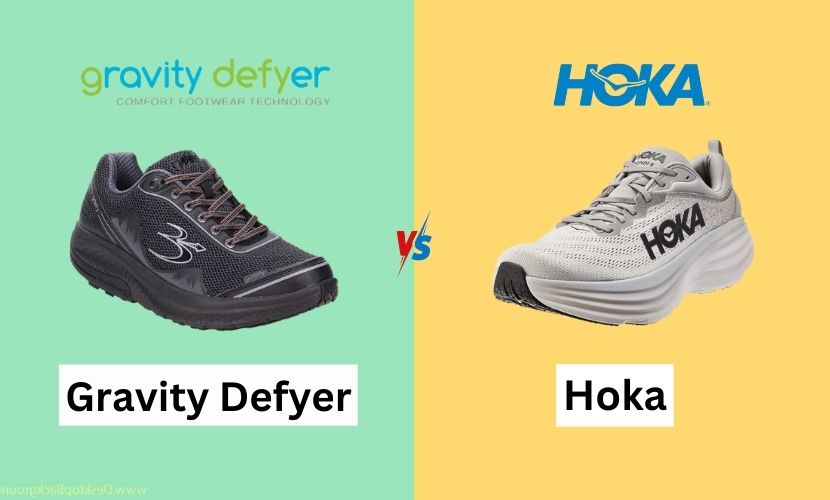Nike Free Run shoes have become synonymous with innovation and versatility in running footwear. These shoes, known for their unique design and cutting-edge technology, have captured the attention of runners worldwide. The Nike Free Run series is specifically engineered to offer a natural, barefoot-like feel while still delivering the necessary support and cushioning for a comfortable running experience.
Nike Free Run shoes are an excellent choice for running enthusiasts. They offer a unique combination of flexibility, comfort, and support, making them highly suitable for various running activities. The shoes feature a flexible sole with deep grooves and a segmented pattern, allowing for natural foot movement and enhanced flexibility. This mimics the feeling of running barefoot, promoting a more natural stride and foot mechanics.
The lightweight materials and breathable mesh uppers ensure proper ventilation, reducing discomfort from heat and moisture. Nike Free Run shoes also provide a balance of cushioning and responsiveness with their foam midsole, minimizing joint impact while maintaining a good ground feel. It’s important to consider the different models available, each with its own characteristics and support levels, to find the ideal Nike Free Run shoe that suits your specific needs, running style, and foot type.
Nike Free Run shoes have garnered a loyal following among many runners who praise their comfort, flexibility, and foot-strengthening benefits. These shoes are meticulously engineered to allow for a natural range of motion, which can enhance running form and reduce the risk of injuries. However, it’s worth noting that some runners may find the lack of support in Nike Free Run shoes uncomfortable, especially during long runs.
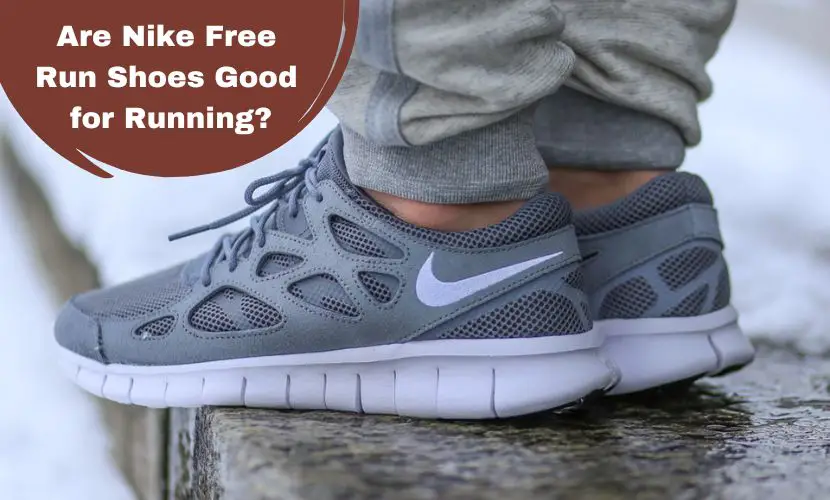
Are Nike Free Run shoes suitable for long-distance running?
Nike Free Run shoes are famous for their feathery and flexible pattern, which permits natural foot movement. However, whether they are adaptable for long-distance running endures a discussion among runners.
Some runners discover the Nike Free Run shoes as snug for long-distance running, while others encounter discomfort and blisters. One reason is that the shoes contain a thin sole, which needs to offer more cushioning and support for the feet during long runs.
Another problem with the Nike Free Run shoes is that they need to be engineered for overpronation or under pronation. Runners with these circumstances may experience pain and discomfort when utilizing these shoes for extended-distance running.
Runners must select shoes with adequate support and cushioning for their feet and running style. While the Nike Free Run shoes may be adaptable for several runners, others may require more particularized shoes for long-distance running.
In conclusion, whether Nike Free Run shoes are perfect for long-distance running is based on the personal runner’s foot kind and running style. It is suggested to consult with an expert to detect the best shoe for your requirements.
Features That Support Nike Free Run For Running
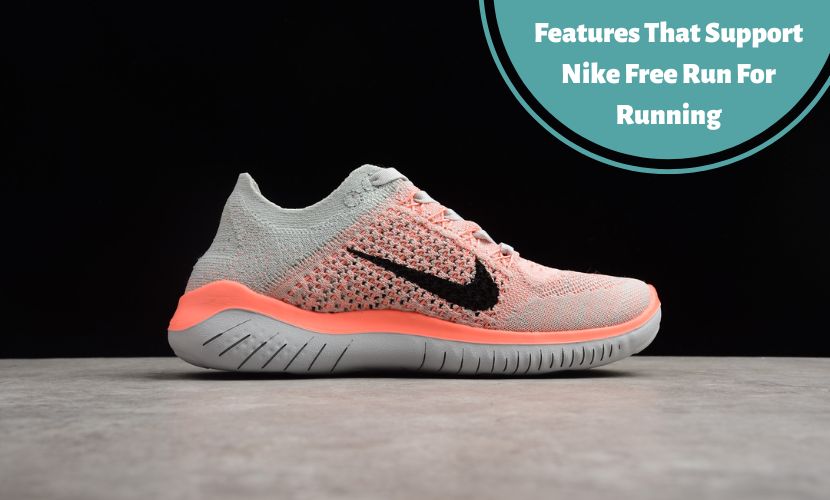
Nike Free Run shoes are structured to offer a barefoot running experience. They contain some features that create them adaptable for running. The following are several features that support Nike Free Run running:
Flexibility
The Nike Free Run shoes contain a flexible sole that permits the foot to move naturally. The sole comprises deep flex grooves that permit a more natural extent of motion. This attribute benefits runners who desire to strengthen their feet and upgrade their balance.
Lightweight
The Nike Free Run shoes are feathery, making them ideal for running. The shoes are engineered of absorbent materials that aid in maintaining the feet excellent, fresh, and dry. This feature is helpful for runners who desire to avert heavy shoes that can slow them down.
Comfortable
The Nike Free Run shoes are structured to be comfortable. They have a squishy, flexible upper that satisfies the foot’s appearance. The shoes also have a padded sole that offers support and comfort. This attribute is incredibly obliging for runners who must avoid injuries and other foot blisters.
Durability
The Nike Free Run shoes are made of high-standard materials engineered to last. The shoes contain a long-lasting sole that can resist the wear and tear of running. This characteristic is beneficial for runners who usually want to avoid replacing their shoes.
Overall, the Nike Free Run shoes are ideal for runners needing a barefoot running experience. The shoes contain several attributes that make them adaptable for running, including flexibility, lightweight, ease, and durability.
Benefits of Nike Free Run for Running
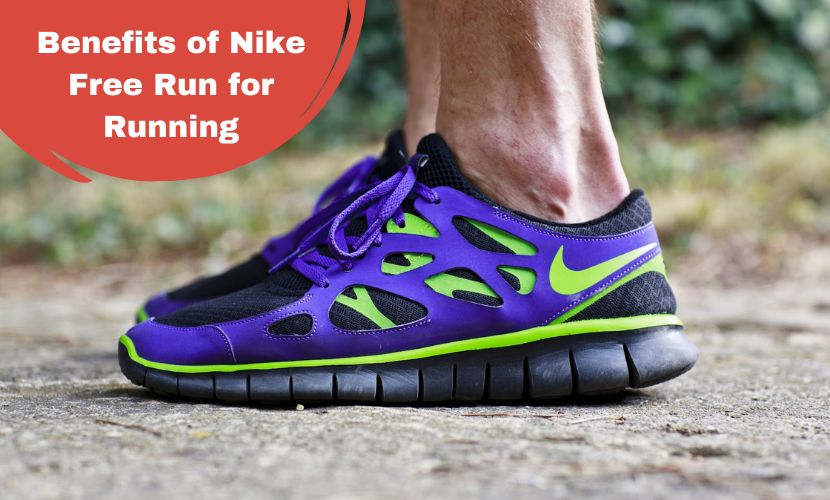
Improved Foot Strength
Nike Free Run shoes are structured to assist foot strength and natural movement. The shoes have a stretchable sole that permits the foot to move commonly, strengthening the muscles in the feet and lower legs. This intensified strength can accelerate better overall performance and minimize the possibility of injury.
Natural Movement
The Nike Free Run shoes are structured to mimic the feeling of running barefoot. This spontaneous movement can aid runners in enhancing their form and lessen the risk of discomfort. The shoes have a deep profile and a feathery design, allowing the foot to move voluntarily and naturally.
Flexibility
The Nike Free Run shoes are thoroughly flexible, permitting the foot to move naturally and unhinderedly. The shoes contain a flexible sole that permits an entire motion span, making them perfect for runners who desire to improve their foot strength and genuine movement.
Comfort
Nike Free Run shoes are made with comfort in mind. The shoes contain a padded sole that provides remarkable impact absorption, lessening the effect on the feet and legs during running. The shoes are also delicate and absorbent, which aids in maintaining the feet cool and snug during long runs.
In summary, the Nike Free Run shoes provide a range of advantages for runners, incorporating advanced foot strength, natural movement, stretchability, and comfort. These attributes make them a fantastic option for runners who desire to improve their performance and minimize the possibility of injury.
Considerations for Running in Nike Free Run
When considering utilizing Nike Free Run for running, several necessary factors must be considered. These comprise arch support, terrain type, and running distance.
Arch Support
Nike Free Run shoes are structured to offer unembellished arch support, which can be a worry for runners with uniform feet or other arch-related problems. It is efficient to consider whether or not the absence of arch support will lead to discomfort or injury during long runs. Runners with flat feet may consider affixing arch support inserts to their Nike Free Run shoes to avert discomfort or injury.
Terrain Type
The Nike Free Run shoes are ideally suited for running on smooth and even surfaces. They are not suggested for running on irregular terrain or trails. The minimal cushioning and deficiency of support in the shoes can create running on rough terrain uncomfortable and potentially dangerous.
Running Distance
The Nike Free Run shoes are engineered for shorter runs and scuttles rather than long-distance running. The minimal cushioning and deficiency of support in the shoes can lead to discomfort and potential injury over elongated distances. It is efficient to review the distance of the run and the person’s comfort level before examining whether to utilize Nike Free Run shoes for running.
In conclusion, Nike Free Run shoes can be a perfect choice for runners who prioritize a minimalist feel and are searching for a shoe that permits natural foot movement. However, it is necessary to consider attributes such as arch support, terrain type, and running distance before using them for running.
How do Nike Free Run shoes compare to other running shoes?
Nike Free Run shoes are versatile running shoes that mimic the feeling of running barefoot. They offer a stretchable sole and the slightest heel-to-toe drop, allowing your foot to move spontaneously as you run. But how do they compare to other running shoes on the market?
When contrasted with conventional running shoes, Nike Free Run shoes provide several advantages. They usually are lighter and more elastic than traditional shoes, which can aid in upgrading your running form and minimize the possibility of injury. They also feature a more natural feel, which can support you in connecting with the ground and enhance your overall running experience.
However, mentioning that Nike Free Run shoes may not be the perfect option for everyone is efficient. They are engineered for runners with good running form searching to boost their performance. If you have any underlying foot or leg problems, such as smooth feet or overpronation, you may require a more supportive shoe to help right these issues.
Nike Free Run shoes are a healthy option compared to other unembellished running shoes. They provide a better balance of flexibility and support and are adaptable for many runners. However, other simple shoes in the industry may be better complemented to your particular needs.
Overall, Nike Free Run shoes are a fantastic option for runners searching for a more natural running experience. They provide advantages over customary running shoes but may be a better option for some. As with any running shoe, selecting a shoe that fits rightly and embraces your specific requirements as a runner is necessary.
What is the heel drop of Nike Free Run shoes?
Nike Free Run shoes are famous for their flexibility and spontaneous running feel. One aspect that adds to this is the heel drop, which consults with the difference in height between the heel and forefoot of the shoe. The lower the heel drop, the more natural the running occurrence.
The Nike Free Run shoes contain a heel drop of 6mm, reviewed as a low drop. This means the heel is only 6mm greater than the forefoot, permitting a more natural foot strike and a good energy shift from the foot to the ground.
The low-heel drop of Nike Free Run shoes makes them an excellent choice for runners prioritizing a more natural running feel. It also supports strengthening the muscles in the feet and legs, as they must work harder to keep balance and stability.
A low heel drop may not be adaptable for all runners, particularly those with a history of injuries or who need more support. It is always suggested to refer to a healthcare professional or a running expert before generating any changes to your running shoes or routine.
Are Nike Free Run shoes recommended for sprinting?
Nike Free Run shoes are engineered to offer a barefoot-like feel and natural movement during running. While they can be utilized for short-distance sprints, they may not be better for acute sprinters.
Nike Free Run shoes’ delicate design makes them perfect for sprinting, but they lack the support and steadiness needed for high-potency sprints. The shoes are made to be flexible and permit natural foot movement, which may not be suitable for sprinting, where stability and support are crucial.
Additionally, Nike Free Run shoes do not have stakes or pins commonly found in sprinting shoes. These spikes offer traction and grip, essential for sprinting on a track or field. These spikes are necessary for Nike Free Run shoes to give enough traction for sprinting, particularly on damp or slippery surfaces.
While Nike Free Run shoes can be utilized for short-distance sprints, they are not suggested for skillful sprinters who need more support, stability, and traction. It is efficient to select the perfect shoe for the activity to avert injury and maximize performance.
Nike Air Vs. Nike Free Run For Running
Several significant differences should be examined regarding selecting Nike Air and Nike Free Run for running.
Firstly, Nike Air shoes are engineered to offer maximum cushioning and support, creating them a renowned option for runners who require extra comfort and impact absorption. The Air technology utilizes squeezed air pockets within the sole to soak up impact and distribute weight smoothly across the foot. This can support in lessening the risk of injury and tiredness, especially for runners with grand arches or prone to joint pain.
On the other side, Nike Free Run shoes are made to imitate the feeling of running barefoot, with a stretchable sole that permits natural foot movement and a feathery construction that encourages speed and agility. The Free technique utilizes deep flex furrows in the sole to offer a more natural extent of motion while providing cushioning and protection from the effect.
Several runners may prioritize the exceptional cushioning and support of Nike Air shoes, while others may prefer Nike Free Run shoes’ more spontaneous feel and flexibility.
It’s also worth mentioning that Nike offers various Air and Free models, each with versatile features and advantages. For instance, the Nike Air Zoom Pegasus is a famous option for runners searching for an iconic, all-around shoe, while the Nike Free RN Flyknit is structured for more plain, natural-feeling running.
Ultimately, the perfect way to select Nike Air and Nike Free Run shoes is to test them and examine which feels most snug and supportive for your running style and requirements.
Nike Zoom Vs. Nike Free Run For Running
Concerning selecting between Nike Zoom and Nike Free Run for running, several chief differences exist to detect.
Nike Zoom
Nike Zoom shoes are engineered to offer a reactive and padded ride for runners. They offer a Zoom Air unit in the heel or forefoot, which gives a bouncy feel and aids in soaking up impact. Nike Zoom shoes are also inclined to have a more significant heel-to-toe drop, which can be advantageous for runners requiring extra support or cushioning.
However, several runners may discover that Nike Zoom shoes feel too chunky or heavy, mainly if they prioritize a more unembellished feel. Aike Zoom shoes can also be more costly than Nike Free Run shoes.
Nike Free Run
Nike Free Run shoes are structured to offer a more natural and stretchable feel for runners. They provide a flexible sole that permits the foot to move more naturally and contain a lower heel-to-toe drop than Nike Zoom shoes. This can be advantageous for runners prioritizing a more minimalist feel or working on their foot strength and flexibility.
However, several runners may discover that Nike Free Run shoes need more cushioning or support, particularly for longer runs or runners with particular foot needs. Additionally, some runners may detect that the flexible sole of Nike Free Run shoes takes some extra time to get used to.
The selection between Nike Zoom and Nike Free Run shoes for running will be based on the runner’s requirements and needs. Trying on both kinds of shoes and checking them out on a short run may be supportive before putting money into it.
Nike Flyknit Vs. Nike Free Run For Running
Nike Flyknit and Nike Free Run are two famous running shoes from Nike that are frequently compared. While both shoes are engineered for running, they have several significant differences that make them better suited for different runners.
Nike Flyknit is famous for its feathery and permeable design, generating it a popular option for runners who desire a shoe that feels like a second skin. The shoe’s upper part is designed from a single piece of structured knit material, which offers a comfortable fit and permits natural foot movement. The shoe also has a reactive sole that provides good grip and support.
On the other side, Nike Free Run is made to imitate the feeling of running barefoot. The shoe’s sole is engineered to be flexible, permitting natural movement of the foot. The shoe’s upper is constructed from absorbent mesh material with good breathability and support. The shoe is also delicate, making it a perfect option for runners who desire a shoe that won’t weigh them down.
Choosing between Nike Flyknit and Nike Free Run for running eventually depends on personal requirements and the kind of running you plan to do. If you’re searching for a lightweight shoe with good support and traction, Nike Flyknit is an ideal option. If you prioritize a shoe that permits natural foot movement and imitates the feeling of running barefoot, Nike Free Run is a better option.
Other Alternatives to Nike Free Run for Running
Regarding running shoes, there are several alternatives to Nike Free Run shoes. Some runners prioritize customary running shoes, while others wear unembellished ones. The following are several choices to consider:
Traditional Running Shoes
Traditional running shoes usually have more cushioning and support than simple shoes. They are structured to offer maximum impact absorption and stability, making them a better option for runners with grand arches or those requiring extra support.
A few famous conventional running shoes comprise:
- Asics Gel-Kayano
- Brooks Ghost
- New Balance Fresh Foam 1080
- Saucony Triumph
- Hoka One One Clifton
Minimalist Running Shoes
Minimalist running shoes are engineered to imitate the feeling of running barefoot. They contain less cushioning and support than customary shoes, which permits the foot to move more spontaneously. Minimalist shoes are ideal for runners who want to upgrade their running form and nourish their feet and legs.
Several renowned minimalist running shoes incorporate the following:
- Vibram FiveFingers
- Merrell Trail Glove
- Altra Escalante
- New Balance Minimus
- Inov-8 Bare-XF
It’s necessary to mention that plain shoes are not for everyone. They need maintenance, and runners with specific foot kinds or injuries may not wear them snugly. It’s always better to consider a podiatrist or physical therapist before converting to minimalist shoes.
In conclusion, some alternatives to Nike Free Run shoes exist for runners to examine. Whether you prioritize conventional or minimalist shoes, bounteous choices are available to embrace your needs.
Conclusion
Nike Free Run shoes are a fantastic choice for running. They have a flexible pattern and cushioning material that offers excellent shock absorption, creating them perfect for short to medium-distance runs. The shoes are also feathery and absorbent, which helps to maintain the feet cool and snug during a run.
While several runners have mentioned injuries from wearing Nike Free Run shoes, this is not versatile to this specific brand or model. Injuries can occur with any shoe if it is not appropriately fitted or the runner does not have the correct running form. Runners must take the time to discover the perfect shoe for their feet and running style.
Overall, Nike Free Run shoes are an ideal option for runners searching for a comfortable, stretchable shoe that can control short- to medium-distance runs. However, runners training for elongated distances or having particular foot conditions may want to consider other choices. It is always efficient to consult a medical expert or running specialist before significantly changing your running routine or footwear.
More Articles:

